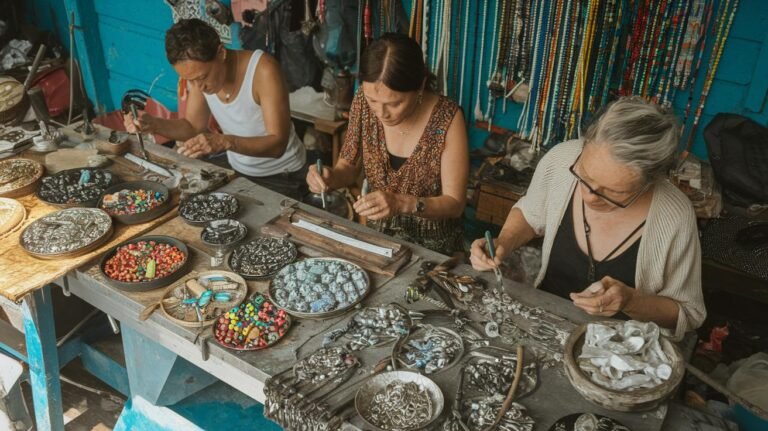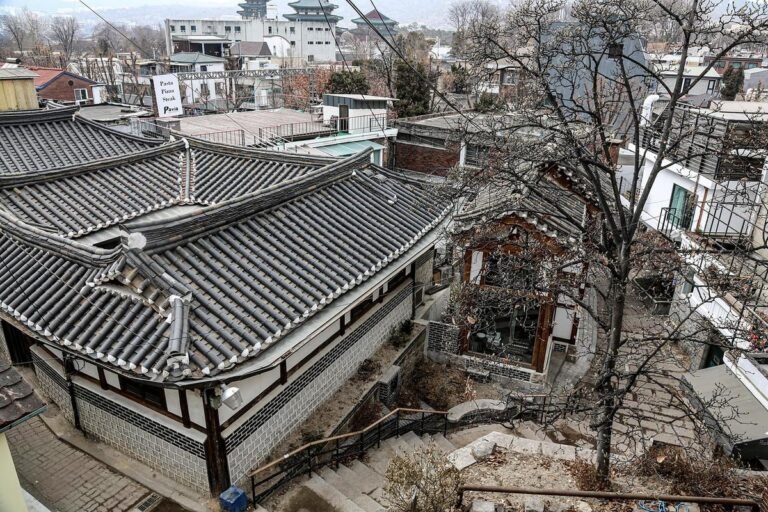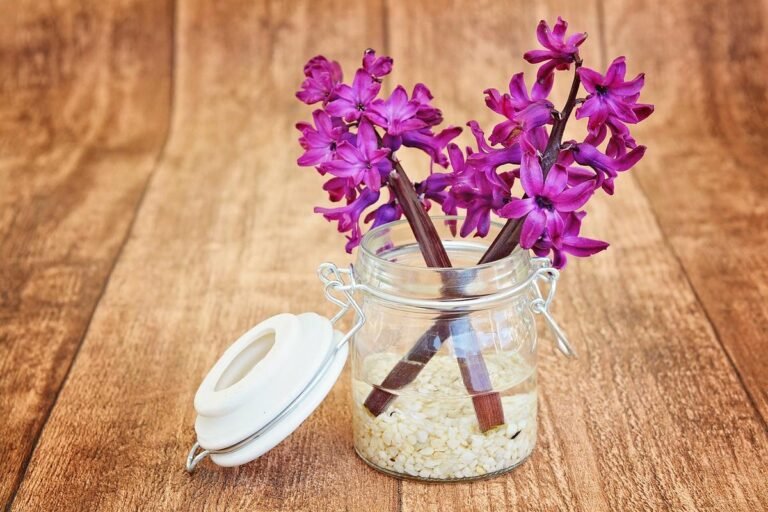7 Ubud art market shopping guide promises treasures
Ever dreamed a market could feel like a humming treasure chest? Step into Ubud Art Market and you’ll discover racks of batik fabrics (cloth dyed with a wax-resist pattern) shimmering in the soft morning light. The air carries a hint of frangipani (tropical flower) and the gentle murmur of friendly vendors.
You’ll duck under colorful stalls overflowing with handwoven rattan bags (light straw totes) and trays of silver jewelry that catch the sun, making each piece practically dance. Pure bliss.
In this guide, I’ll share 7 insider tips to shop like a local. You’ll snag stunning finds and turn every purchase into a mini story you’ll savor long after your flight home.
Ubud Art Market Shopping Essentials
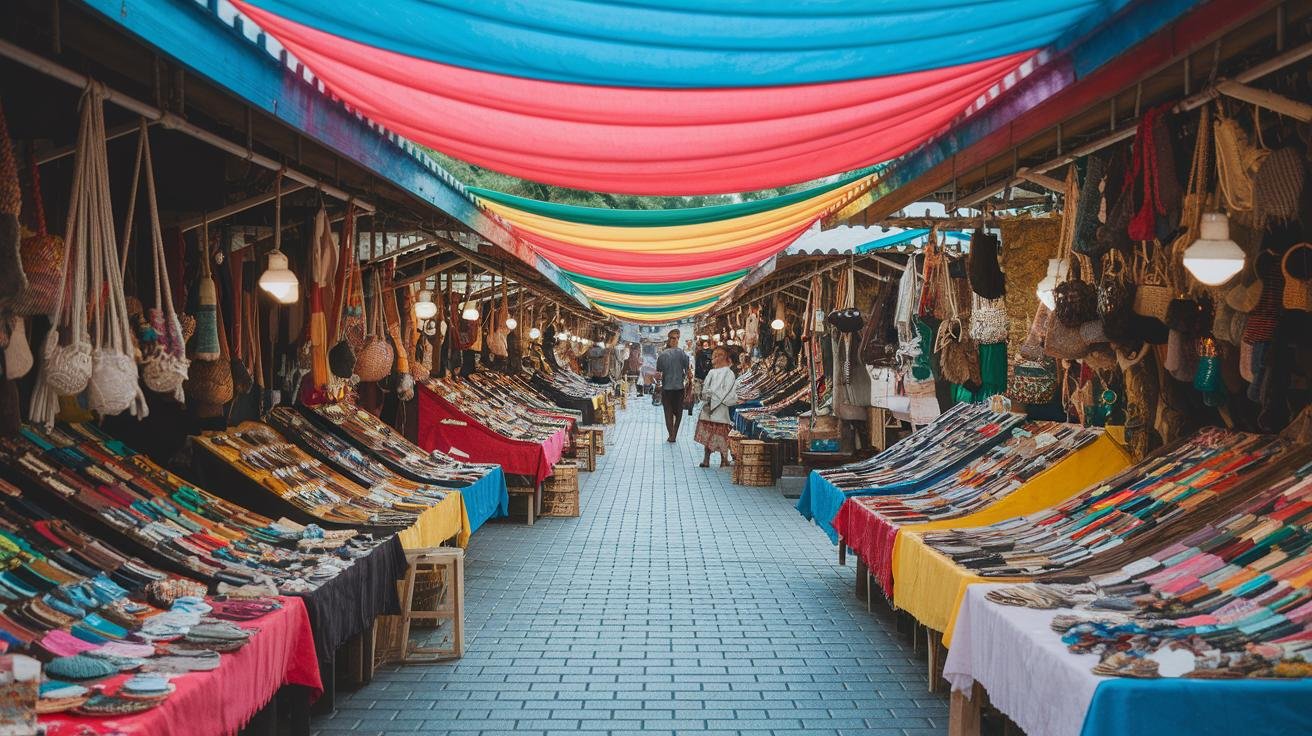
Ever dreamed of stumbling into a place bursting with color, crafts, and warm smiles? Welcome to the Ubud Art Market, your go-to spot for handwoven rattan bags (light straw totes), sparkle-catching silver jewelry, and paintings that practically hum with Bali’s spirit. You’ll find us at Jl. Raya Ubud No. 35, right in the heart of central Ubud. Entry is free, and stalls are open daily from 8 AM to 9 PM, though many artisans start packing up around 5 or 6 PM.
If your villa’s just around the corner, you can stroll over and dive right in. Coming from Seminyak or beyond? A scooter, car, or shuttle (shuttles often include parking) will drop you at the entrance. Taxis and local vans are happy to help too. Just remember to factor in a few rupiah for parking.
| Transport Mode | Travel Time | Parking Fee |
|---|---|---|
| Scooter | About 1 hour from Seminyak | IDR 2,000 |
| Car | About 1 hour from Seminyak | IDR 10,000 |
| Shuttle | Varies (van services available) | Often included in fare |
Morning is pure magic. Roll in at 8 AM and feel the soft glow of sunrise on wooden masks and batik fabrics (wax-resist dyed cloth). Vendors are fresh, displays are full, and you’re first in line before the bargaining buzz begins. By 10 AM, tour groups wander in and pathways hum with chatter. If you stick around past noon, the air can get thick and some stalls close early. Late afternoon brings cooler breezes, laid-back sellers, and quieter aisles, a sweet spot for last-minute treasures.
Pack small bills in Indonesian rupiah (IDR) for easy deals, and don’t forget your brightest smile. Tranquility meets excitement right here.
Top Craft Categories at Ubud Art Market
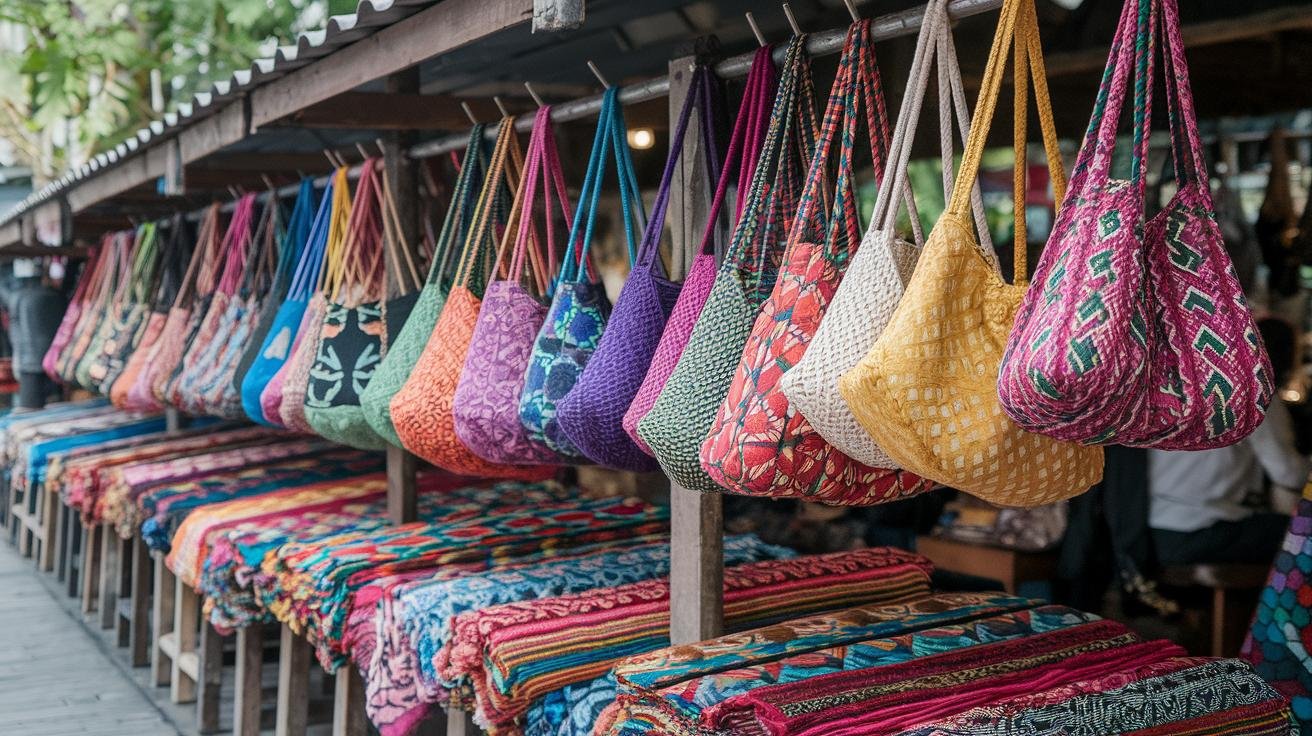
In the first winding lanes, you’ll find handwoven textiles – rattan (flexible palm vine) and ikat (yarn-dyed fabric) striped in lively hues and natural tones. I love the way the morning sun warms those colors. Lightweight tote bags start at $5, and soft scarves or wall hangings slip into your arms for about $10 to $15. Pure delight.
Nearby, batik (hot wax dyeing) stalls beckon with sarongs, throws, and wraps in playful patterns. You can almost smell the warm wax and tropical rain mingling in the air. Prices hover around $12 to $20 for those soft, patterned pieces. Ever dreamed of floating away on a cloud of color?
Just a few steps on, you’ll see glints of silver at stalls run by Celuk artisans (from a famous silver-loving village). Rings, necklaces, and bracelets shimmer in the morning light starting at $10. Don’t be shy – ask for a quick stamp test to make sure you’re taking home genuine silver. Oops, did I mention the tiny hallmarks to look for?
Drift on to the wood carving corner where teak and suar wood (dense tropical hardwood) come alive. Miniature statues of deities, animals, and local folk characters start at $8. More elaborate bronze accents can climb to $50. Tranquility.
Further along, a rainbow of canvas paintings and handpainted sarongs captures village life and rice terraces (stepped fields that glow emerald at sunrise). Small cloth prints begin at $15, while gallery-ready canvases can reach $60. The vivid brush strokes almost make you feel the soft breeze.
Next, bead-woven treasures pop in jewel tones – bracelets, chokers, and keychains that slip neatly into your pocket. These little accessories float between $4 and $12, perfect for gifts or a solo treat. You know, a tiny bit of Bali in your daily carry.
By the way, don’t miss the traditional Balinese masks carved from lightweight wood and painted with natural pigments. They start around $20 and climb to $40 for oversized pieces. Ever pictured a mask smiling back at you from your wall? If you linger by the turtle statue landmark, you might even commission a custom design. For more insider pointers, check out visiting Ubud Art Market: tips and hours.
Effective Bargaining and Haggling Tips at Ubud Art Market
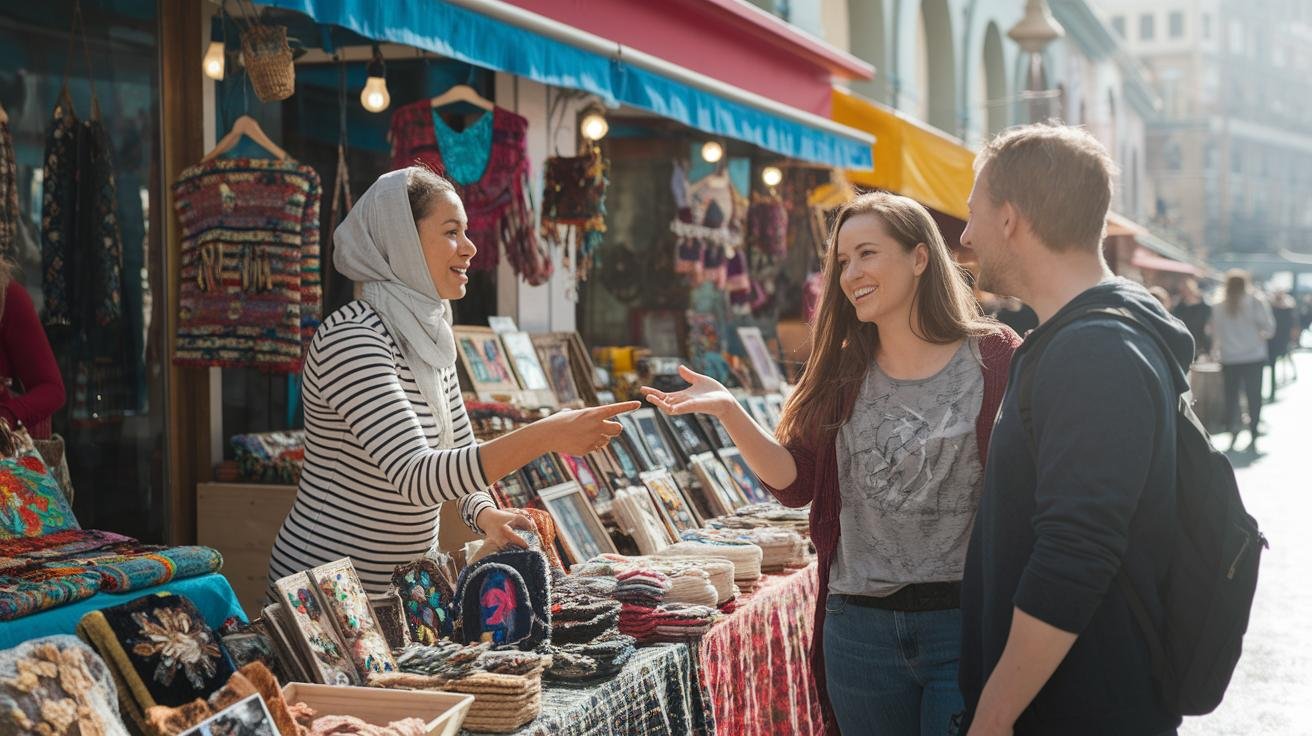
Imagine weaving through Ubud Art Market, where colorful batik fabrics (hand-dyed cloths with bright patterns) and glinting silver jewelry catch your eye. If you feel shy about asking for a lower price, don’t worry! Here in Bali, haggling is part of the charm. Vendors expect it and often list high to start.
Ever dreamed of walking away with a one-of-a-kind treasure and a story to tell? Here are a few simple steps:
- Wander first. Stroll past several stalls to compare hand-carved masks, silver bracelets, and woven baskets. Notice the price tags.
- Pause at a stall, catch the seller’s eye, and say “Selamat pagi (good morning).” A nod and a warm greeting set a friendly tone.
- Ask for the base price and listen with a smile.
- Make your first offer at about 30 percent of that initial price. It may feel bold, but it’s totally normal here.
- Increase your bid in small steps – 10 or 15 percent at a time – until you both nod in agreement.
- Keep it light. A soft laugh or a playful “just learning Bali style” sparks a friendly vibe.
Seal the deal with a smile and a quick “matur suksma (thank you).”
Cash rules here. Bring plenty of small rupiah notes (those colorful bills you get at the ATM). Many stalls won’t take cards. With cash in hand you might score 20 to 50 percent off the original sticker price on most crafts.
Your next treasure awaits.
Ensuring Authenticity and Quality at Ubud Art Market
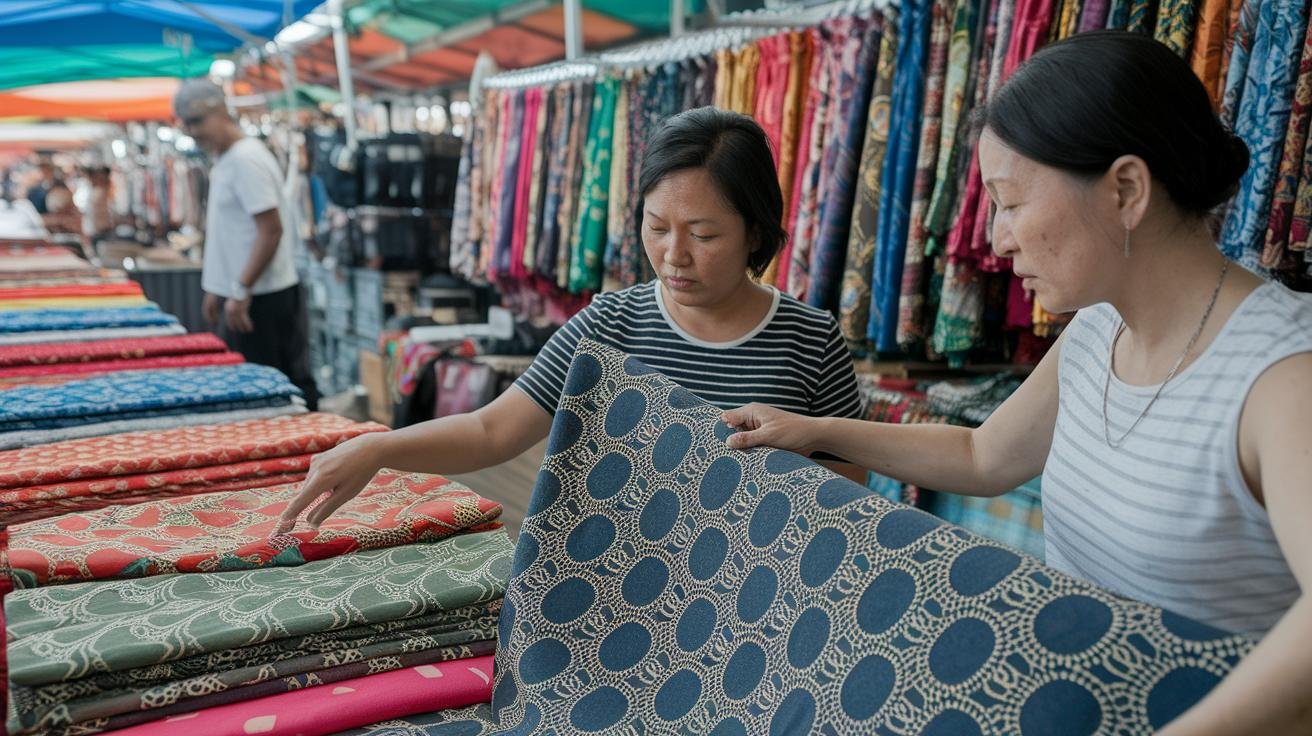
Sometimes a friendly stall hides a clever knock-off. Don’t worry, I've got a few easy checks to help you shop like a pro.
First, silver jewelry. Ever seen a silver ring turn yellow by morning? Ask the vendor for a small test kit (it’s basically an acid drop) or look for tiny hallmarks stamped into the metal. Hold it in the light and feel its weight, real silver has a pleasant heft.
Next, batik prints (wax-resist dyed cloth). Hold the fabric up to daylight and look for smooth, even colors and sharp wax lines. Blotchy dyes or fuzzy patterns usually mean it was rushed, not hand-crafted.
Run your fingers along scarf edges to check the thread density. Tight, consistent weaves hint at true craftsmanship. Loose threads? Eh, probably a quick machine job.
For wood carvings, follow the grain with your fingertips. No glue spots or odd seams, just a silky finish where an artisan’s tools shaped every curve. Pure bliss.
By the way, stalls sporting fair-trade tags or eco-friendly labels are often the real deal. Strike up a chat, ask where they source materials and watch them work their magic. You’ll walk away with more than a souvenir. You’ll carry a genuine piece of Bali’s heart.
Packing, Shipping, and Travel Logistics for Market Buys
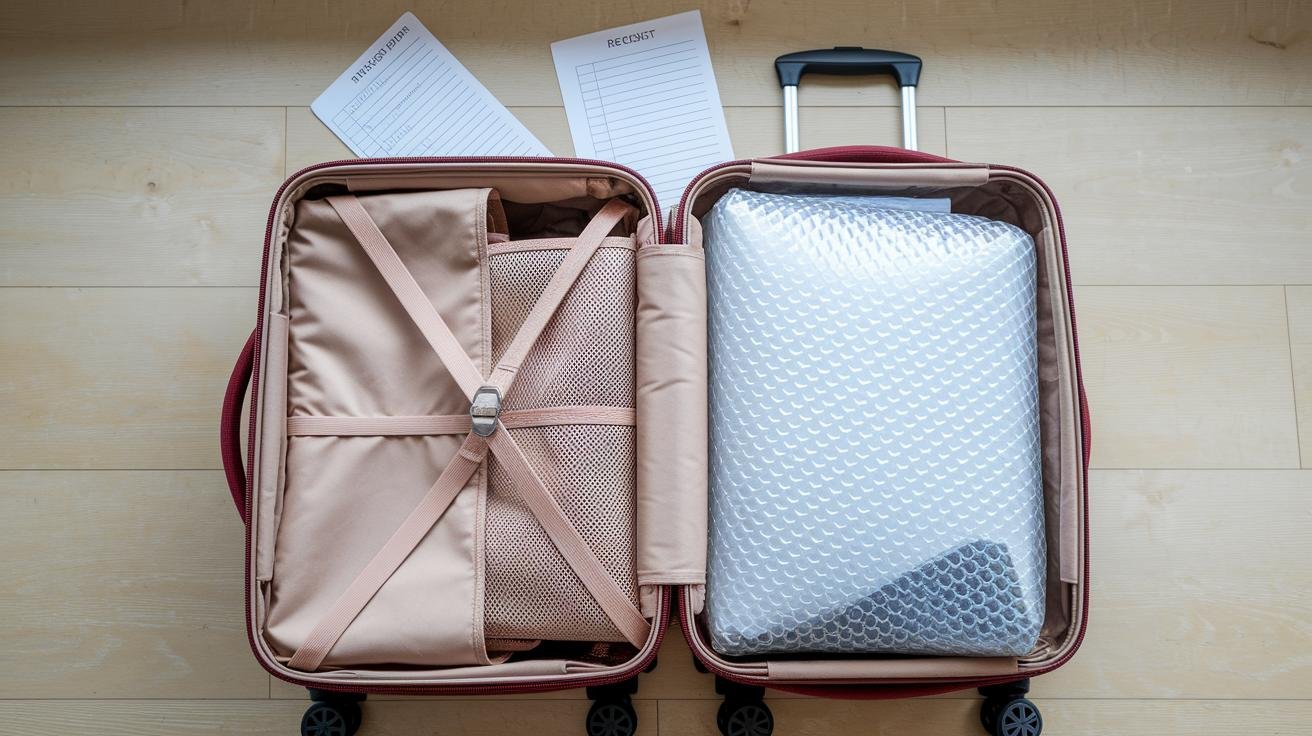
Ever found a lightweight scarf or a small batik print (hand-dyed fabric) that you just can’t leave behind? Tuck those treasures into a foldable tote or sling a slim duffel over your shoulder. You can even slip soft silver jewelry between your clothes for extra cushion. This little trick keeps your souvenirs close and easy to spot at security checkpoints.
But what about heftier souvenirs, like wood carvings or ceramic pottery (fragile clay pieces)? Pop each piece into your checked bag, nestling it in rolled T-shirts or beach towels for a cozy buffer. Then weigh your suitcase at your villa before heading to the airport. No one wants surprise fees when checking in those precious finds.
Next, if your bag still feels jam-packed, you’ll see stalls selling bubble wrap and sturdy shipping boxes. Many market vendors also offer door-to-door delivery in about 7–10 days. You just fill out a simple form, pay in rupiah, and watch local artisans wrap each item with care. Indonesian customs don’t clamp down on personal handcrafted souvenirs, so your mask or sculpture should sail through without extra hoops.
Your Ubud finds, safe and sound.
Local Food, Drink, and Facilities at Ubud Art Market
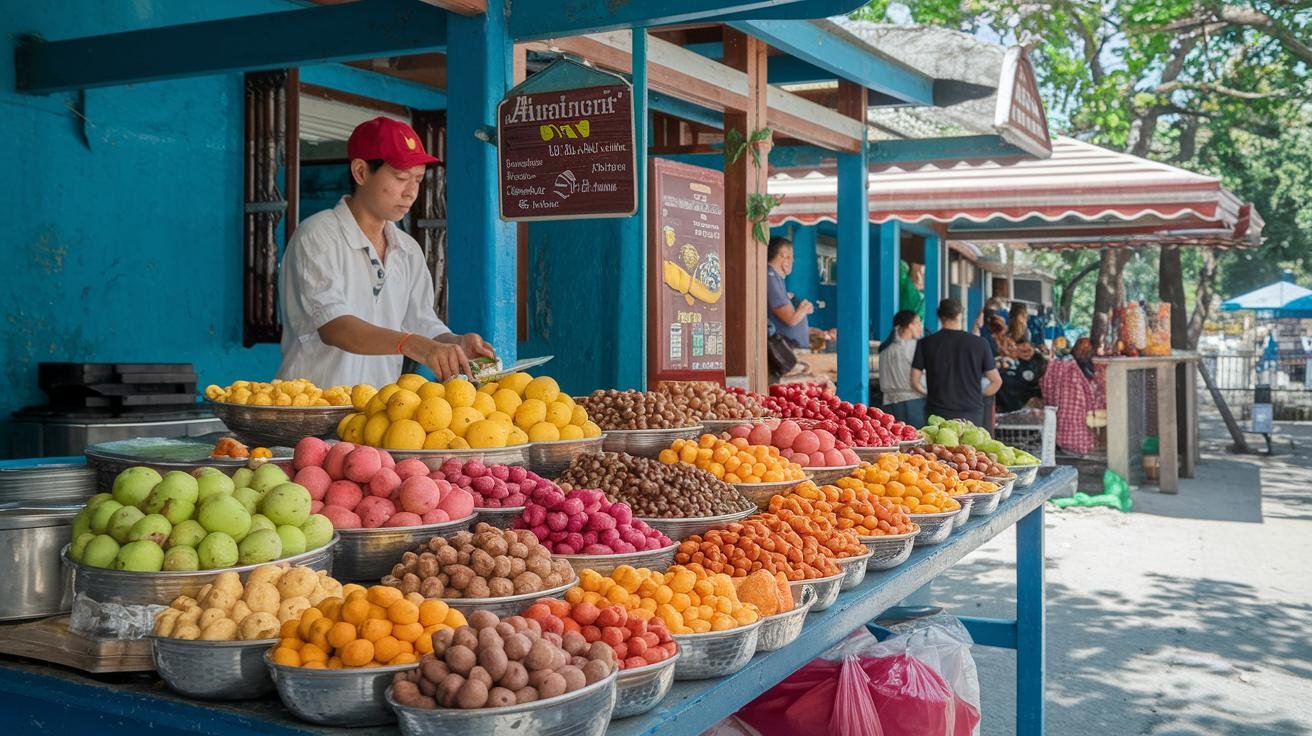
Between the handwoven textiles and wood carvings, your nose might lead you to snack stalls with tempeh chips (crispy soybean cakes) for about $1. Ever tried those? Or cassava crisps (thin manioc slices) for around $1.50. Then there are fresh tropical fruit cups piled high with papaya, pineapple, and banana for close to $2 a cup.
The sweet juice trickles down your fingers, mingling with the warm scent of low-watt lamps and sizzling coconut oil. Pure bliss.
And right between the craft rows, you’ll spot traditional Bali coffee stands serving small cups of dark espresso or creamy lattes (20,000–30,000 IDR). Need something cool? Young coconuts are sliced open at cold drink stalls so you can sip pure coconut water straight from the shell for about 25,000 IDR.
Feeling warm? Shaded rest areas under canvas tents and low benches invite you to pause, snack, and watch the colorful craft scene swirl around you.
Stay hydrated at the water-bottle refill station near the north entrance. Staff will top up your reusable bottle free of charge. Oops, almost forgot, a cold bottle of water is yours to grab and refill as you go. Then stretch your legs at restrooms tucked inside the central corridor, where you’ll find hand soap and paper towels waiting.
Ready to hunt down your next Balinese treasure?
Additional Attractions and Side Trips from Ubud Art Market

Just steps from the lively stalls, you’ll spot Ubud Palace (the old royal mansion) right across the way. Imagine dancers in vibrant costumes moving to the gentle beat of gamelan music. Their smiles are contagious.
Next, wander two minutes to Saraswati Temple (honoring the goddess of art and wisdom). Floating lotus ponds (pink and white petals bobbing on glassy water) and ornate stone carvings will draw you in. You might pause to breathe in the cool, mossy air.
Ever thought about a sunrise stroll? Lace up for the Campuhan Ridge walk (a 2 km trail through rolling hills). The morning breeze whispers through tall grasses and you’ll spot wild orchids peeking out. It’s a gentle hike that feels like a secret shared by the jungle.
Got a scooter or a car? In just 8 minutes, you can reach Monkey Forest (where cheeky long-tailed macaques swing among mossy temple ruins). Their playful chatter echoes through the trees. Fun, a bit wild, just as Bali should be.
For a show-stopper view, head 15 minutes north to Tegalalang Rice Terraces (emerald staircases carved into the hills). At sunrise, each terrace glows gold and green, like nature painted every step.
Pure magic. Oops let me rephrase that, you’re going to need your camera.
By the way, pairing these stops with a riverside lunch (fresh fish grilled over coconut charcoal) or a guided village tour makes for a full-day escape. You’ll savor local life and leave with a heart full of Bali stories. I guess that’s it. Happy exploring.
Top Vendor Recommendations and Unique Souvenir Finds at Ubud Art Market
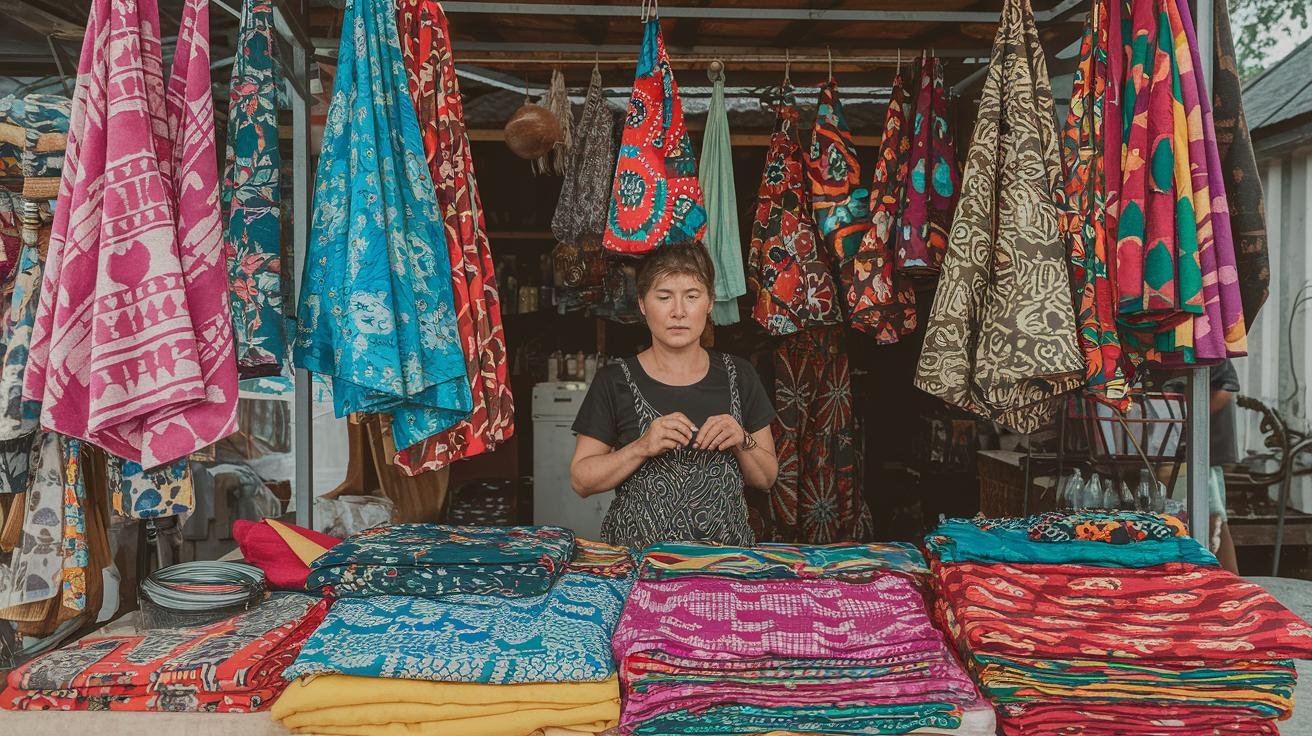
-
Stalls 5–8 bring you soft batik (wax-dyed cloth) and ikat (hand-dyed yarn fabric) scarves, wall hangings, and throws in bold flower patterns or warm earth stripes. You can feel the smooth fabric and watch as artisans tie, dye, and unroll your custom piece right before your eyes.
-
Right by the north entrance you’ll meet Celuk silversmith families hammering silver into rings, necklaces, and bracelets starting at just $10. Follow the gentle ring of metal on metal, if you catch a live stamping demo you might get your own freshly pressed piece.
-
Next to the little turtle statue is the wood-carving corner. Here, artisans shave and smooth teak wood into tiny gods, playful animals, or peaceful village scenes. Ask and they’ll carve a custom figure in just a few hours, imagine the aroma of warm wood shavings filling the air.
-
Stalls 10–12 host live printmaking demos on canvas and fabric. Watch as local artists press inked blocks across cloth, then pick your own scene, from emerald rice terraces (stepped fields that glow at sunrise) to dancers in vibrant sarongs. You can order prints on the spot and bring a slice of Bali home.
-
Along the path to Saraswati Temple you’ll find painting booths offering quick group classes and private lessons. Ever dreamed of painting your own piece of Bali? Feel the brush glide as you learn traditional Balinese motifs (like lotus flowers or temple gates), or commission a sunset rice-terrace scene of your villa retreat. Pure joy.
Final Words
In the heart of Ubud Art Market (Jl. Raya Ubud No. 35), you’ve got all the logistics sorted with transport modes, parking fees, and stall hours.
You’ve seen where to find batik scarves, silver jewelry, wood carvings and where to snack on cassava crisps.
We walked through haggling steps, authenticity checks, packing tricks, and shipping services.
Add in coffee stands, rest areas and nearby gems like Saraswati Temple and the palace.
This Ubud art market shopping guide leaves you ready to explore with confidence and delight.





